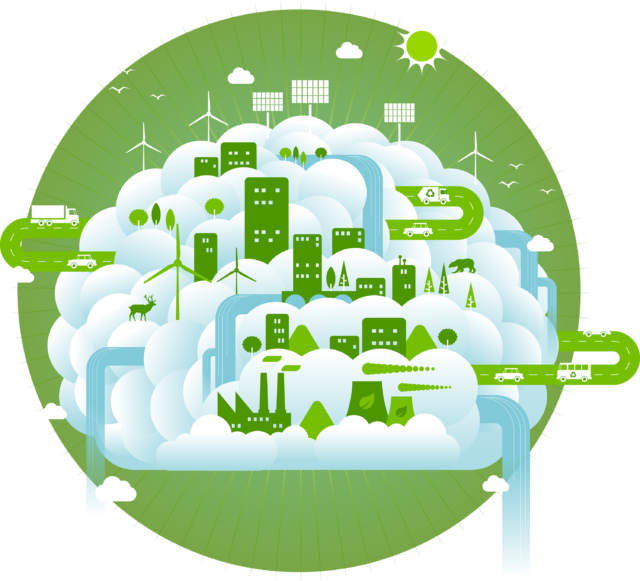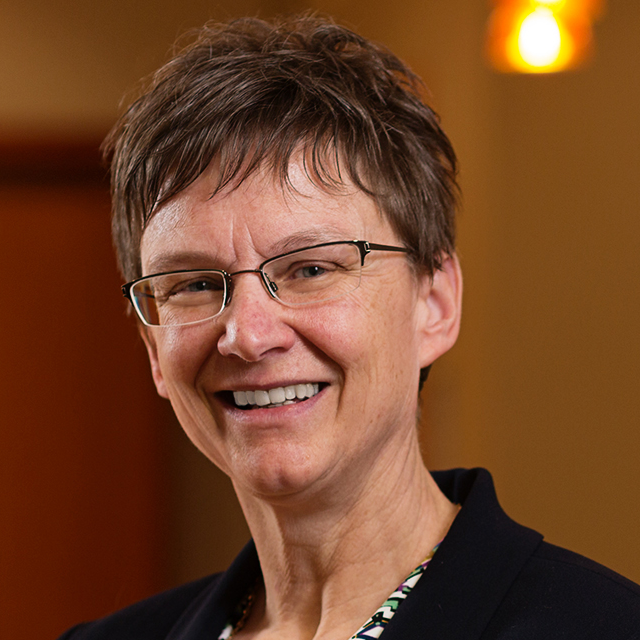New Funding Available for Energy Initiatives at New York State Colleges and Universities

Hear from our sustainability planning expert Barbara Johnston and energy discipline leader Michael Barbasch as they outline the new funding program, and break down how organizations can get started.
Good news for New York State colleges and universities that want to reduce energy use and greenhouse gas emissions! The New York State Energy Research and Development Authority (NYSERDA) now offers 50% to 100% cost sharing for plans and studies to campuses that join NYSERDA’s REV Campus Challenge. Each college or university is eligible for up to $154,000 toward the cost of projects including:
- Baseline inventories
- Climate action plans
- Feasibility studies or financial analysis for projects related to energy efficiency, combined heat and power, or renewable energy generation (such as solar, wind, or geothermal)
- Financing assistance
- Permanent meters and sub-meters
LaBella’s planning, engineering, and architecture staff can help to identify, finance and carry out your project at minimal cost to the school.
There are many reasons for institutions such as schools, colleges, universities and hospitals to reduce energy use and to generate renewable energy.
- Save money. Energy used for lighting and to heat and cool buildings, fuel vehicles and run machinery and equipment eats up a large part of an institution’s budget. Energy efficiency and renewable energy projects can reduce annual costs – savings that add up year after year. While the initial cost may be daunting, financial incentives and financing can help.
- Be accountable to future generations. Reducing waste, be it physical waste or energy waste, demonstrates responsibility to the earth and the future generations that will inhabit it.
- Be a part of something big. While reducing energy use in one individual building or even an entire campus may seem like a drop in the bucket, collectively our actions can make a big difference toward meeting local, regional, national and global targets for reducing greenhouse gas emissions. If enough of us reduce the amount of electricity or natural gas we use, utilities will be able to extend the life of existing sources and transmission infrastructure.
How do I get started?
The first step is to make energy monitoring and management a priority for your leadership team. The next step is to identify a point person to facilitate energy efficiency and clean energy initiatives across all departments. If you’re not ready to hire a full-time “energy manager”, these responsibilities can be assigned to someone already on staff.
Whether full-time or part-time, the person responsible for coordinating energy initiatives will need good data and technical support. Whether your organization is just starting out or has a long record of innovative energy-saving improvements, LaBella can help. Some examples of the services we provide are:
Baseline Inventory
In order to track progress, you need to know where you are now, hence the adage “you can’t manage what you don’t measure.” The baseline inventory summarizes total energy use and costs by facility, function and type of fuel. It typically includes all buildings, processes and outdoor lighting, as well as vehicles. For individual buildings, it may include “benchmarking” which helps track energy use over time and assess each building’s performance compared to other buildings of similar type and size. For greenhouse gas emissions, it may also include an audit of physical waste. Once completed, the person responsible for monitoring energy use will be trained to update the inventory every year.
Energy Master Plan or Climate Action Plan
While the baseline inventory shows where we are now, a strategic plan lays out a path to a more efficient future. It includes targets – such as a 20% reduction by the year 2030 – to reduce energy and/or greenhouse gas emissions and recommends specific actions needed to meet the targets.
Voluntary Reporting/Pledges
Voluntary reporting programs encourage ongoing monitoring through public commitments to reducing energy use and greenhouse gases. For example, the Sustainable Tracking, Assessment and Rating System (STARS) is a self-reporting framework that encourages colleges and universities to measure their sustainability performance (https://stars.aashe.org/ ). Its annual “Sustainable Campus Index” recognizes “top performers” based on their STARS reports. Similarly, the American College & University Presidents’ Climate Commitment maintains a public reporting framework (http://secondnature.org/who-we-are/climate-leadership-network/ ) and requires participating institutions to sign a pledge to become “climate neutral.”
Building Energy Audits
An energy audit identifies cost-effective energy conservation measures (ECMs). Following an inspection of the building, the audit analyzes overall energy consumption and specific building processes and systems. Recommendations include estimates of initial costs and energy savings. A Level I audit typically involves a basic walk-through and identifies ECMs that will pay for themselves in 1-3 years. Level II and III audits involve more detailed analyses of building components and processes.
Feasibility Analyses
Technical analyses that go beyond Building Audits are needed to evaluate building components and mechanical processes that consume a lot of energy, and for renewable energy generation or combined heat and power. A feasibility analysis estimates the cost to install and operate the improvement, projects how much energy will be generated or saved, and outlines any ongoing operation and management requirements.
Funding and Contracting
Although many energy efficiency and clean energy initiatives will save money over the long-term, finding the capital to make the initial investment can be a challenge. Fortunately, NYSERDA and other agencies and organizations offer grants, financial incentives and other cost sharing programs. Some institutions set up “green funds” to finance energy efficiency and clean energy improvements. Although not-for-profit institutions cannot benefit from federal tax credits, there are ways to structure contracts so that a private installer can pass along the incentives from tax credits to the institution.
Meters and Sub-meters
Because ongoing measuring and monitoring is key to a successful energy efficiency program, installing meters and sub-meters can help an institution reduce energy use. Sub-meters within buildings that are leased or used by several departments or programs can ensure that each department or program leader is accountable for energy used and can be acknowledged (celebrated!) for reducing energy use. Having accurate and timely information about energy performance is critical to efficiency programs that depend on people.
NYSERDA launched the NYS REV Campus Challenge to recognize and support colleges and universities in New York State that implement clean energy projects. To join the Campus Challenge, a college or university must complete a brief survey and agree to promote clean energy efforts through campus investments, research and community engagement. (https://www.nyserda.ny.gov/All-Programs/Programs/REV-Campus-Challenge/Get-Started). The Technical Assistance for Roadmaps program offers funding for a variety of plans, studies and metering programs (see the list below.) A total of $2 million is available statewide.
Activities eligible for 100% NYSERDA cost share:
- Any project with a total cost less than or equal to $10,000
- Report to voluntary third party certification organizations (i.e. AASHE STARS, the Climate Commitment, NYC Carbon Challenge)
Activities eligible for 75% NYSERDA cost share:
- Baseline building energy consumption
- Complete greenhouse gas emission inventory
- Develop energy master plan, climate action plan, or sustainability plan
Activities eligible for 50% NYSERDA cost share:
- Conduct level 2 or level 3 ASHRAE building audit
- Identify energy conservation measures
- Conduct feasibility assessment and/or financial analyses for clean energy projects
- Identify funding opportunities for clean energy projects and develop grant and/or incentive applications
- Assistance in developing clean energy project contracting and procurement
- Permanent meters or sub-meters (capped at $10,000 per institution)

About the Author
Barbara Johnston, AICP, LEED AP NDSenior Planner
Barbara has over 28 years experience in community planning and project management. She has prepared numerous comprehensive plans as well as strategic plans for agricultural preservation, downtown revitalization, waterfront redevelopment, economic development and transportation services. Barbara has extensive experience in engaging the public as well as stakeholders in the planning process. She is also proficient in utilizing GIS software for mapping and data analysis. She has been a featured speaker on energy conservation and renewable energy strategies for municipalities.

About the Author
Michael Barbasch, PE, CEM, CBCP, LEED APEnergy & Commissioning Discipline Leader
Mike is a Senior Energy Engineer with over 16 years of experience in demand side energy efficiency strategies. His primary focus includes energy efficiency auditing and developing innovative solutions for various facility types. He has provided project preliminary assessments, utility bill analysis, detailed energy calculations, investment grade audits and cost estimates, engineering design support and project management services. Mike has helped clients realize significant savings through energy grants and incentives as well as energy cost reductions and operational improvements.